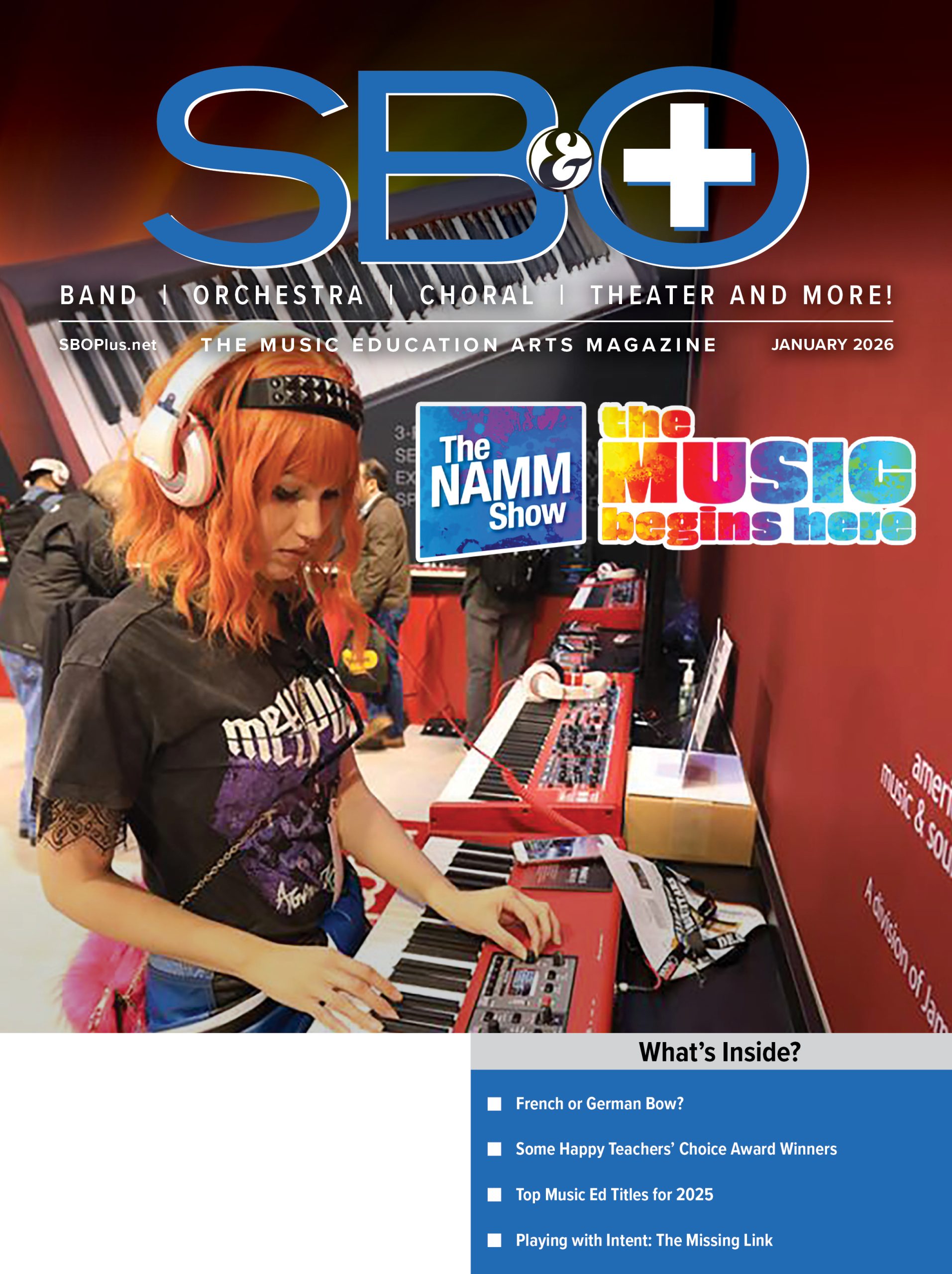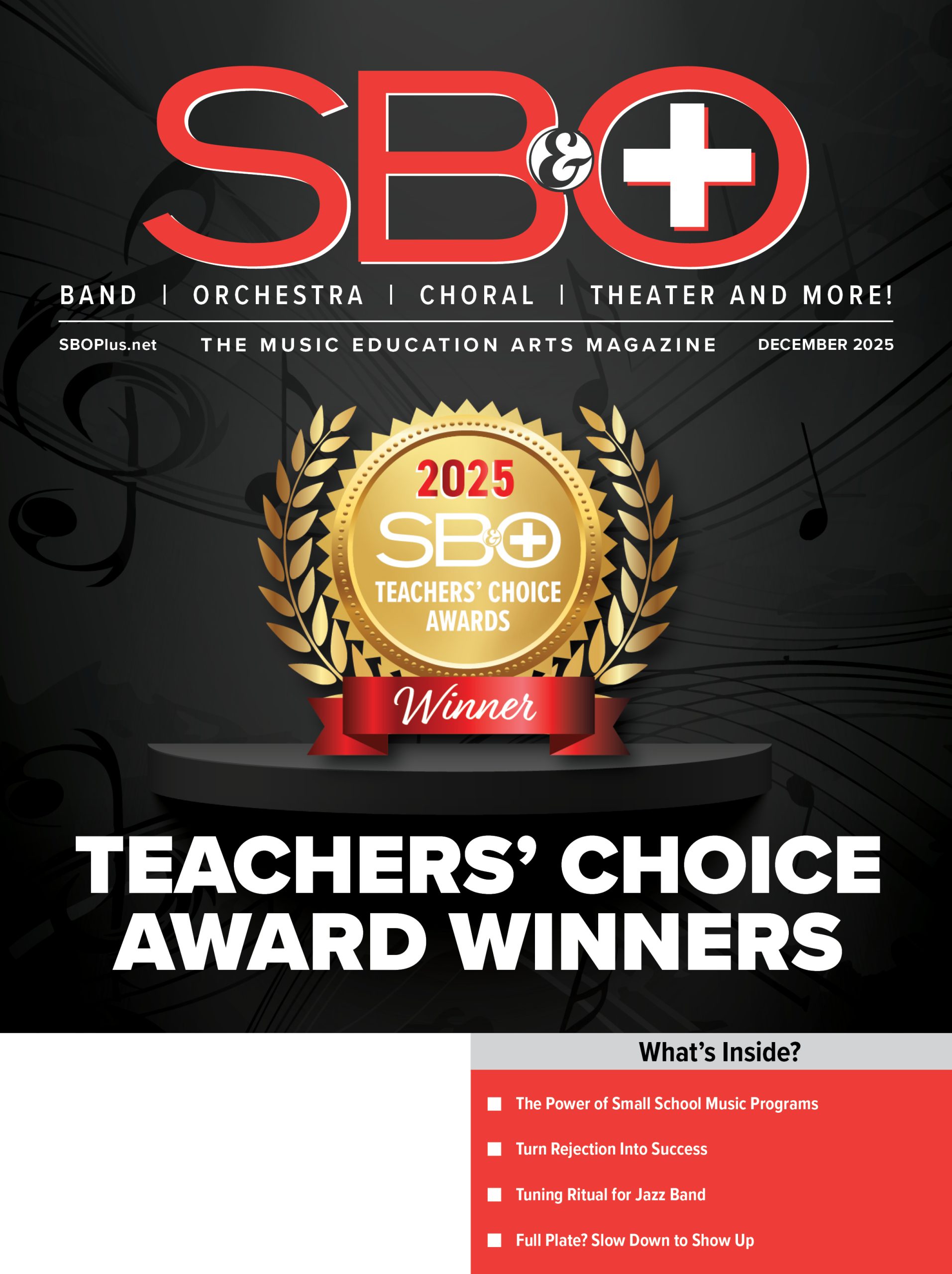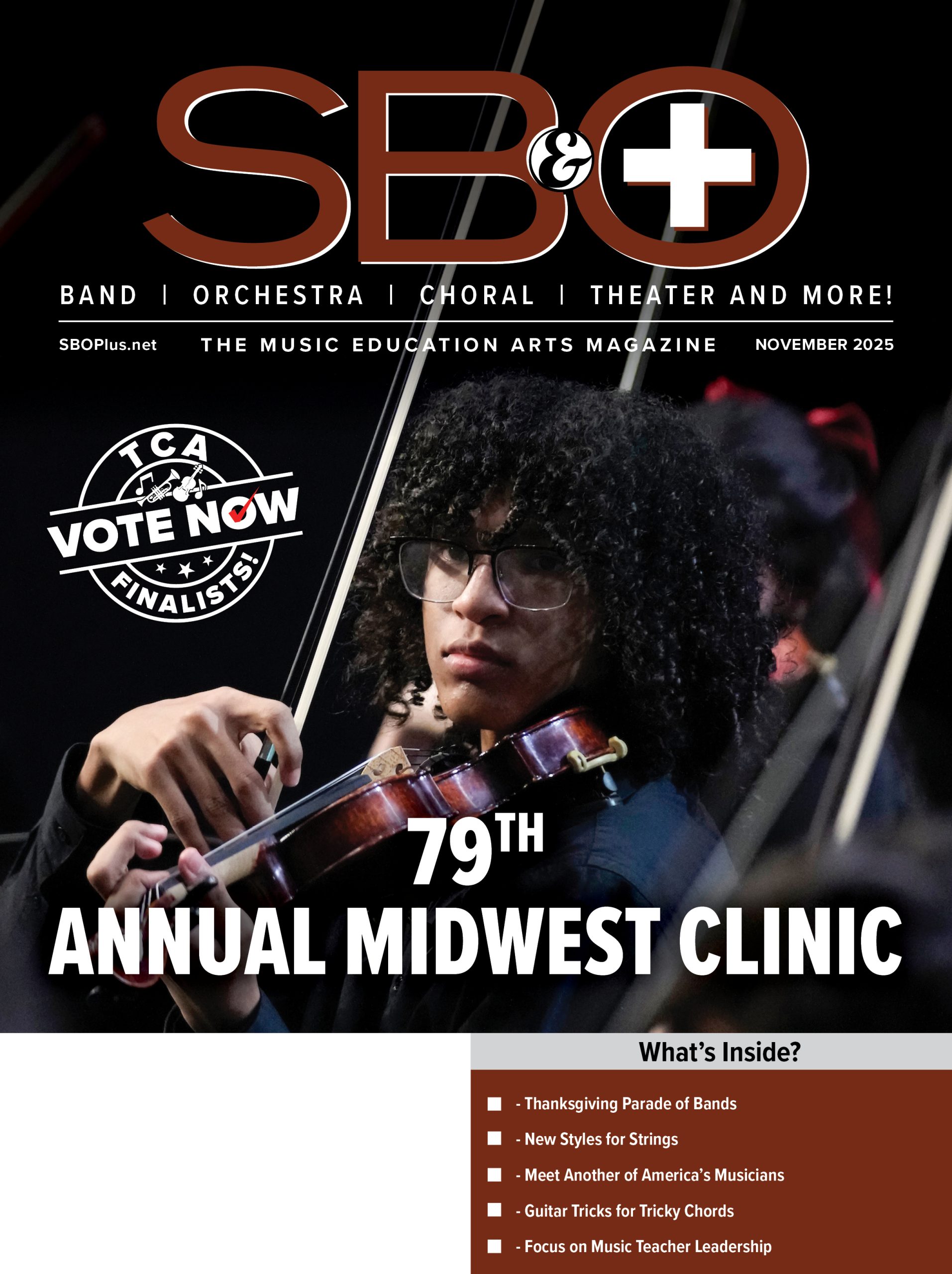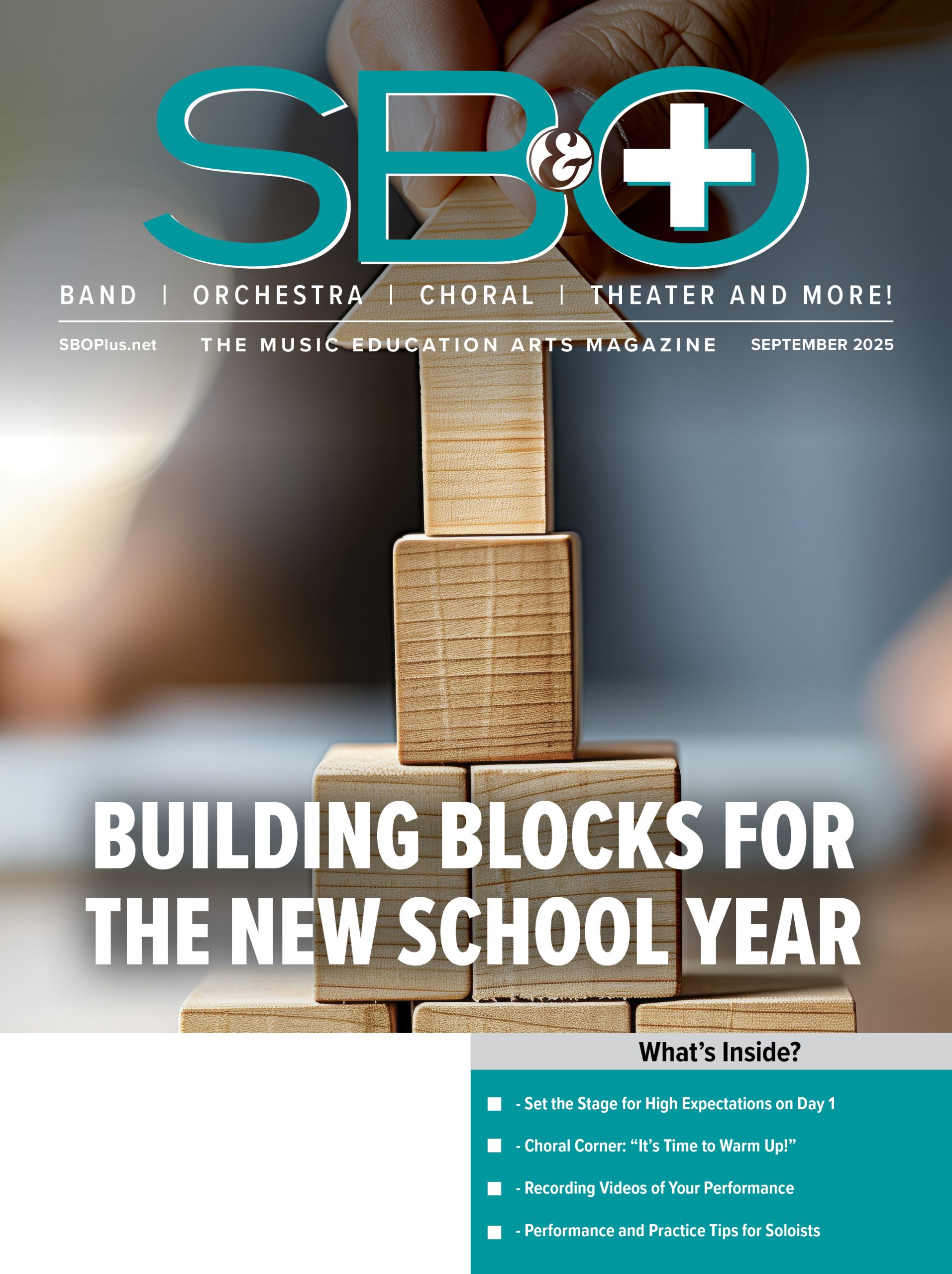
Powerful Software for your Music Program
A question that pops up regularly on social media is “What is the best music technology software?” But it begs the question, “best for what?” What we really need to know is which program best fits your needs
The criteria for best music creation software for use in schools are considerably different from those for a professional engraver or producer. Whereas pros require power above all else, the priority for schools should be ease of use and cost. After all, you want to teach music, not software.
For most schools, cloud-based software is going to be your best option. Cloud-based notation and DAW (digital audio workstation) software are powerful enough to handle most music lessons yet are easy to learn and priced to fit your budget. Students learn the concepts common to both types, which will easily translate to pro software when they are ready. Better yet, they’re designed with music education in mind, providing safe COPPA-compliant environments—don’t let your IT department tell you otherwise—and supporting collaboration and class management. And all of the programs have free versions or trials you can use to try them out.
There are a few other advantages to cloud-based software. You know that all of your students will be using the same app and the latest version, and you need not worry about what type of computer they use. I tested all the programs on an older MacBook Pro and a base-level Chromebook, and while you can tell the difference, the programs worked fine on both.
Of course, cloud-based software requires an Internet connection, the more robust, the better. Dodgy connections will likely cause some problems, and if it happens in the middle of a live class, it can be very frustrating. For that reason, whenever you’re teaching online, always have a backup lesson plan that you can use when connections aren’t optimal.

Duly Noted
Notation software is the word processor of music. It’s not particularly glamorous, but it does the job, and there is something about seeing a nicely printed page you created. For the reading musician, it’s one of those tools that we can’t live without.
There are two excellent cloud-based notation programs, Noteflight and Flat. They don’t have all the bells and whistles of the professional engraving programs but don’t sell them short, either. These are powerful programs that can handle most of your needs. Best of all, they are easy to learn, so you’ll spend more time teaching music instead of software.
While Noteflight’s tools are a little more sophisticated, both programs are pretty similar. Their interface uses a single window that is easy to navigate. Tools are separated into logical categories with shortcuts that are easy to remember. However, a few more for things we often use, such as transposing or changing meter and key signatures, would be helpful.
Entering music with either the computer keyboard or MIDI keyboard is a breeze, and the program adjusts the layout automatically as you work. Both programs can import and export audio and MusicXML files and extract parts automatically.
I put the programs through the paces creating a score, a lead sheet, and a worksheet. Noteflight was able to handle everything, and while I did run into a transposition bug, it was easily fixed. Flat handled the score and lead sheet with no problem but lacked a few features I needed for the worksheets. For example, I couldn’t hide time signatures, and while it helped that it doesn’t provide cautionary key and time signatures at the end of systems, that could cause problems in scores. But Flat can automatically color notes for boomwhackers and also supports shape notes.
Both programs run fine in browsers on computers, Chromebooks, and tablets. Flat also has a free iOS app that even works well on phones. Flat also has a Chrome add-on that lets you type musical examples directly into a Google Doc or Slide.
It’s Manageable
Both programs include class management tools. You can create as many classes as needed, and students can belong to more than one class. Both also integrate with other learning management systems (LMS) such as MusicFirst, Google Classroom, and Canvas. Flat takes that a step further by providing quick integrations with many other programs such as Groove Pizza, blogs, and even Soundtrap.
Along with class management, the education features of Noteflight Learn include access to lesson plans, exercises, music methods such as the Essential Elements series, and hundreds of free scores. There is also premium content available for purchase and the new SoundCheck feature that compares and evaluates a student’s performance to scores.
Pricing
The education version of both programs requires a subscription. An annual subscription to Noteflight Learn is $69 for the first ten users and $2 for each additional user. SoundCheck and the premium content libraries are extra. Flat for Education is $2 per user with a minimum of 50 users. MusicFirst subscribers can purchase subscriptions to either program at a discount.

A New DAWn
The DAW is the glamor model of music software. Combining elements of recording studios, drum machines, and samplers with the power of a computer, they enable bedroom producers all over the world to make and share music.
While there are quite a few cloud-based DAWs, two programs, Soundtrap and BandLab, stand-out for their support for education. As with the notation programs, they are similar, sporting a track-based interface with support for MIDI and audio recording and editing. Each includes a library of loops and a decent collection of virtual instruments and effects.
Soundtrap has a clean, modern interface. Virtual instruments have basic controls that would be great for teaching basic synth concepts such as envelopes and filters. There is also a large collection of effects that look like stompboxes that are inserted on individual tracks.
Soundtrap recognized all my MIDI and audio devices immediately, and it recorded both MIDI and audio with no noticeable latency, so I had no problem overdubbing tracks in real-time. The only issue I had was with navigating the loop library. The library is extensive and includes a filter that sorts loops by instrument. But the loop names aren’t very descriptive, and there’s no information about key or tempo either, though they automatically conform to both key and tempo of the song.
Since being acquired by Spotify, it’s not surprising that Soundtrap has added support for podcasts, including the option to publish them directly to Spotify. While a great feature, it’s worth noting that Spotify is outside the secure classroom, so you’ll want to monitor this carefully.
Soundtrap has excellent class management and also integrates with most popular LMSes. Soundtrap for Education is $5 per student per year. Discounts are available through MusicFirst.
What sets Bandlab apart from the others is that the education version is free, but it doesn’t end there. Whereas the weakness of most free programs is the user interface, Bandlab’s interface is excellent. It also recognized my devices immediately, and I was making music right away without any issues. The loop library’s filter searches by genre and instrument and includes descriptive names, tempo, and key information, making it easy to find what I needed. MIDI and audio recording and playback were solid and reliable with no latency. The effects were impressive, including some models of classic gear, and you can create your own chains and save them as presets.
Bandlab’s class management tools are less intuitive than the other programs, and technical support isn’t quite as good, though still better than you might expect from a free program. Bandlab also integrates with Google Classroom. Free software usually has some sort of trade-off, such as ads or collecting data, but not Bandlab.
A Learning Experience
As an experienced music technology user, I found all of these programs intuitive and easy to use, requiring only an occasional peek at the manual. Soundtrap and Noteflight include video tutorials, while Flat and Bandlab provide web manuals. There are also plenty of videos to be found online, and a quick search will often produce the answers you need. For those of you who need a little more guidance, Technology in Music Education (TI:ME) will launch their new Level 1A course on teaching with notation and DAW software by the time this is published. (disclaimer: the author is the project manager for the course)
We’re beginning to see the light at the end of the pandemic’s tunnel, and a return to the classroom is possible in the not too distant future, and I’m sure we’ll hear a collective sigh of relief as your ensembles begin rehearsing again. But that doesn’t mean abandoning what we’ve learned this past year. Music technology needs to be a part of every music program. Notation software is the perfect addition for your ensemble programs. Students can learn to compose and arrange for solos and small ensembles or use it for music theory assignments.
And while you might not use a DAW with your band or orchestra, they can help entice new students to experience music. Music tech classes can remove barriers and help decolonize your music program, making it more equitable. Reaching more students means you can have influence over the music they make in the future. And who knows, you might even have some fun.
George Hess is a professor of music at Sunway University in Malaysia




























